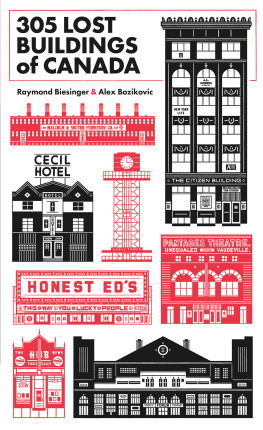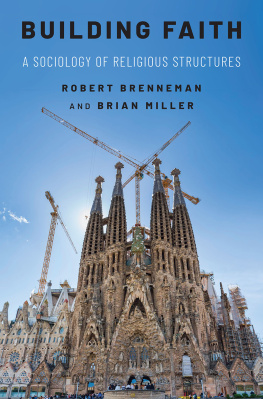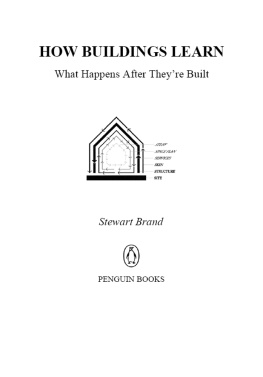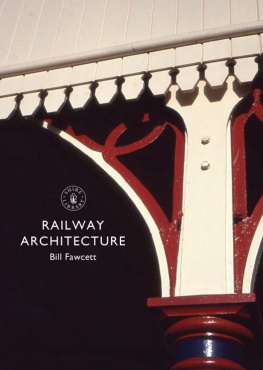FIVE HUNDRED
BUILDINGS OF NEW YORK
PHOTOGRAPHY BY JORG BROCKMANN
TEXT BY BILL HARRIS
Foreword by Judith Dupr

Text copyright 2002 by Black Dog & Leventhal Publishers, Inc.
Original photography copyright 2002 by Jorg Brockmann.
All rights reserved. No part of this book may be reproduced in any form or by any electronic or mechanical means, including information storage and retrieval systems, without written permission from the publisher.
eISBN 978-1-60376-266-3
Library of Congress Cataloging-in-Publication Data available upon request
Published by
Black Dog & Leventhal Publishers, Inc.
151 West 19th Street
New York, New York 10011
The photographer would like to acknowledge James Driscoll and Erik Freeland for providing additional photography for this book.
CONTENTS
All building with  are landmarks
are landmarks
FOREWORD
Tall masts of Mannahatta! Superb-faced Manhattan! Beautiful hills of Brooklyn! Vast, unspeakable show and lesson! My city! Has anyone since Walt Whitman done justice to the ecstatic inventory of New York? This book comes close, with a thousand portraits, some familiar, some less so. It is a yearbook of sorts, picking out individuals in a cast of thousands, putting names to faces that are sometimes overlooked in the presence of New Yorks powerful, indivisible gestalt.
On New York streets, time, history, and memory converge and disperse with breathtaking speed. It is a living space, framed by street after street of widely disparate structures, every corner, every inch impossibly cobbled together by generations alike only in their ambition. It is gritty with dirt and failed dreams, a gray city made alabaster by virtue of the hopes of the sheer numbers who call it home.
There is no ambivalence in New York. Its too tough a place. Sure, there are days of ambivalence, years even, but the thought of living anywhere else is unfathomable to those under its spell. Native birth has nothing to do with being a New Yorker. Nor yearsone can become a New Yorker in an instant. Even those who have physically left never leave completely. Welded into a wrought-iron fence at the World Financial Center, overlooking the Hudson River, are Frank OHaras words: One need never leave the confines of New York to get all the greenery one wishes. I cant even enjoy a blade of grass unless I know theres a subway handy, or a record store, or some other sign that people do not totally regret life.
Another poet. Describing the world pulse that beats here always comes down to distillation. One can attempt to categorize New York, realizing all the while that its essence, like the elephant described by the six blind men, defies pat definition. Aficionados of skyscrapers, churches, bridges, restaurants, or residences in any of the five boroughs could speak volumes on all those subjects, and have. In its infinite variety and fluidity, the city cannot be pinned down. One view can merely be added to the thousands that have been offered and yet will come.
Kurt Vonnegut coined the phrase Skyscraper National Park to describe Manhattan. The idea of the city as a national park, a rare configuration that deserves protection, approaches truth. Some call the deep spaces that are formed by New Yorks tall buildings canyons but, with a connotation more geologic than urban, the word seems inadequate to describe the citys chiseled verticality. Skyscrapers, the most spectacular display of our civilizations technical prowess, are made by human hands. We are dwarfed by their shadows and yet they are our creations. This uneasy possession, we by them or them by us, sets up a reflexive tension that adds to the citys nerve.
Manhattans brash ascendancy is made possible by the islands solid schist foundation and exaggerated by the two rivers that contain its twenty-two square miles. Because of her skyscrapers, Manhattan invariably claims the lions share of visibility, though it is but a fraction of the 320 square miles that make up New York City.
Everyone in New York weighs 150 pounds. As any elevator mechanic can tell you, thats the weight those maximum occupancy notices in elevators are based on. Ask him about skyscrapers and hell speak the language of his professionlow-rise, high-rise and freightabout twenty such elevators in a building a block wide. It was all uphill once Elijah Otis figured out in 1854 that people get grumpy if they have to climb more than six flights of stairs. Though every other aspect of a skyscraper can change, its corethe elevatorsrarely do. If you pause too long between car and lobby, the door will begin to close, a process known in the business as nudging, no doubt with New Yorkers in mind. Dont try to stop them. The doors will win every time.
What is a skyscraper? Existing beyond the debate of steel skeletons versus the inclusion of elevators is the one true definition: intent of scale. Only in New York would a fifty-story building appear a modest proposal. Louis Sullivan built only one building here, the Bayard Building on Bleecker Street, yet surely he had New Yorks swagger in mind when he defined a skyscraper: The force and power of altitude must be in it, the glory and pride of exaltation must be in it. It must be every inch a proud and soaring thing, rising in sheer exaltation that from bottom to top it is a unit without a single dissenting line.
The Empire State, Chrysler, Daily News, American Radiator buildings and Rockefeller Center epitomize the golden age of the skyscraper between the two World Wars. Mies van der Rohes bronze Seagram Building heralded the arrival of the International Style, presaged six years earlier and just across Park Avenue, by the remarkable glass-clad Lever House. Only a New York character like Philip Johnson could recycle the past with postmodern buildings that have been notoriously compared to Chippendale furniture (the Sony Building) or a tube of lipstick (53rd at Third). The current hybrids bred from modernist, postmodern, and vernacular styles pale beside a true original, Frank Lloyd Wrights Guggenheim Museum.
It was in October 2001, in Washington, DC, that I began to grasp the enormity of New Yorks loss after the fall. When that city was laid out it was conceived as a star, with each of the main avenues punctuated by a view of the domed Capitol, a constant reminder of democratic ideals. When the World Trade Center went up, the twin towers shunned the mere scale of the streets, preferring instead to be creatures of the sky. They had no relationship to human measure, their size was beyond even New Yorks large grasp. They were always there, a navigational constant that was taken for granted. We are exhausted by the effort of understanding the new emptiness left in their wake. Like New York itself, they have entered the realm of myth, as real now in memory as they once were in steel and concrete. Perhaps more so. My ferocious love of the skyline has never been stronger.
I cannot decide if New York is a city of sidewalks or of sky. The sidewalks are addictive in their turbulence, theatricality, and liberating anonymity. The latter quality, the citys most delectable by far, left few convinced that a certain gentleman was innocent of his crimes by virtue of insanity, proof of which, his lawyers argued, was his propensity for walking around the Village in a bathrobe. Ive ignored worse.
If you want to know New York, walk. Many of the gems portrayed in this book are tucked away in neighborhoods known best on foot. The shops comprise a world bazaar, especially in Brooklyn and Queens, the latter a veritable United Nations, just without the seats. The sidewalks are wide enough to hold despair and elation. The energy rising off them, whether yours or anothers, can change the face of a day. Its theater at its finest, and free. Gawk upwards if you must, but gimmeabreak, dont block the flow. New Yorks greatest mystery is the collective knowledge of its inhabitants, which travels from one to another through some strange osmosis that may or may not be related to the 96-point type used in the headlines of the New York Post. The street cannot be switched on or off. Its spiritual force is a religion.










 are landmarks
are landmarks